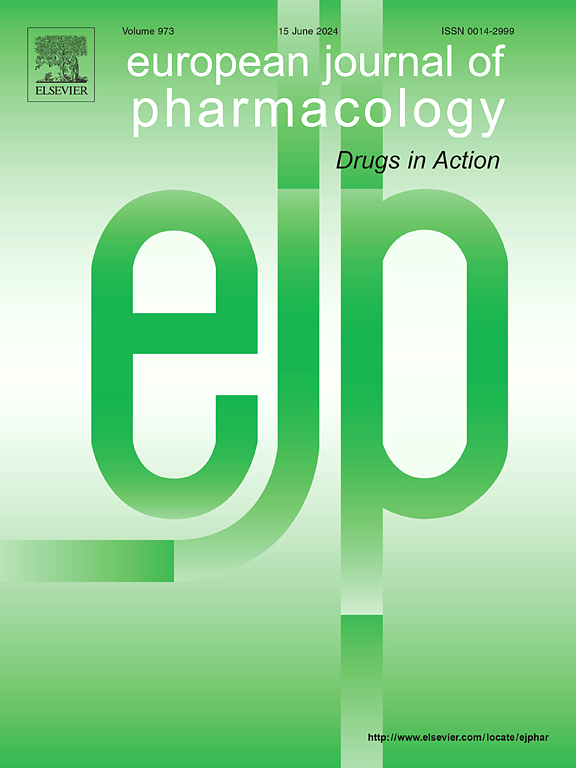The protective role of resveratrol on hyperoxia-induced renal injury in neonatal rat by activating the SIRT1/PGC-1α signaling pathway
IF 4.2
3区 医学
Q1 PHARMACOLOGY & PHARMACY
引用次数: 0
Abstract
Background
Supplemental oxygen is commonly used to treat newborns with respiratory disorders. It has been explored that hyperoxia increases oxidative stress, and have the potential adverse effects on developing organs. Mitochondrial biogenesis plays a crucial role in maintaining mitochondrial homeostasis, and resveratrol (Res) has its unique advantage in promoting mitochondrial biogenesis. However, the molecular mechanisms controlling mitochondrial biogenesis in hyperoxia-induced kidney injury remain unclear. The aim of this study was to evaluate the protective effect and it's mechanisms of Res on hyperoxia-induced kidney injury in neonatal rats.
Methods
Sprague-Dawley rats were housed in normoxia or hyperoxia (85% O2) and randomized to receive saline, dimethyl sulfoxide, and Res administered intraperitoneally from postnatal days 1∼14(All medicine is scheduled to be given at six o'clock every afternoon). Split the rats into six groups, and on postnatal days 1, 7 and 14, kidney samples were acquired for HE staining and PAS staining to assess kidney development, terminal deoxynucleotidyl transferase dUTP nick end labeling (TUNEL) to detect apoptosis, and real-time quantitative polymerase chain reaction and immunoblotting to detect the expression levels of SIRT1, PGC-1α, NRF1, NRF2 and TFAM.
Results
Hyperoxia induced tubular and glomerular injury, increased renal tissue apoptosis, decreased Silent information regulator 2-related enzyme 1(SIRT1), Peroxisome proliferator-activated receptor-γ coactivator-1α(PGC-1α), nuclear respiratory factor 1(Nrf1), Nrf2, mitochondrial transcription factor A (TFAM) protein levels in the kidney, and inhibited TFAM mRNA expression in mitochondria, diminished ND1 copy number and ND4/ND1 ratio. In contrast, Res reduced renal injury and attenuated renal tissue apoptosis in neonatal rats and increased the levels of the corresponding indexes.
Conclusions
Res protects neonatal rats from hyperoxia-induced kidney injury by promoting mitochondrial biogenesis, possibly in part through activation of the SIRT1/PGC-1α signaling pathway.
求助全文
约1分钟内获得全文
求助全文
来源期刊
CiteScore
9.00
自引率
0.00%
发文量
572
审稿时长
34 days
期刊介绍:
The European Journal of Pharmacology publishes research papers covering all aspects of experimental pharmacology with focus on the mechanism of action of structurally identified compounds affecting biological systems.
The scope includes:
Behavioural pharmacology
Neuropharmacology and analgesia
Cardiovascular pharmacology
Pulmonary, gastrointestinal and urogenital pharmacology
Endocrine pharmacology
Immunopharmacology and inflammation
Molecular and cellular pharmacology
Regenerative pharmacology
Biologicals and biotherapeutics
Translational pharmacology
Nutriceutical pharmacology.

 求助内容:
求助内容: 应助结果提醒方式:
应助结果提醒方式:


